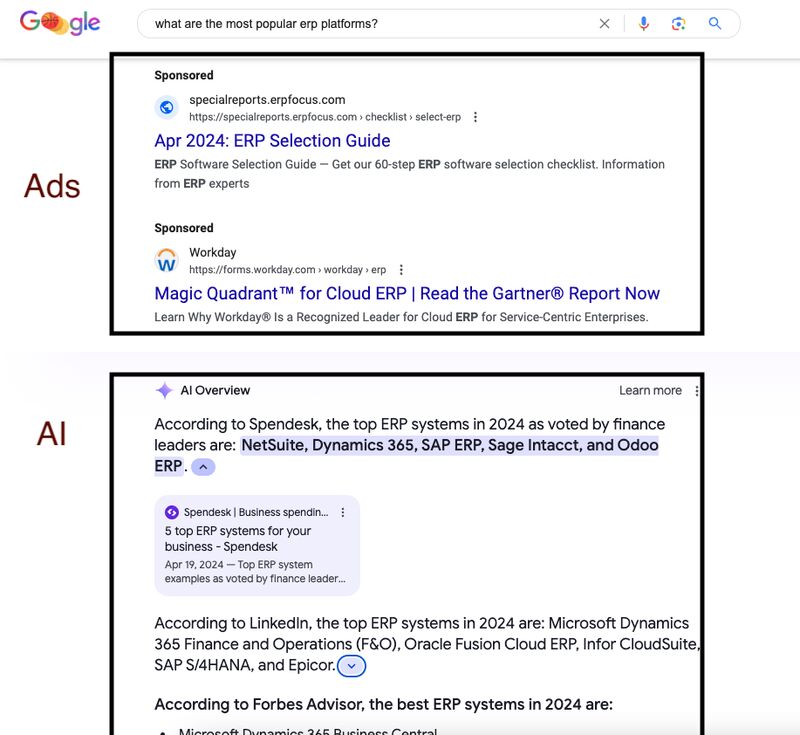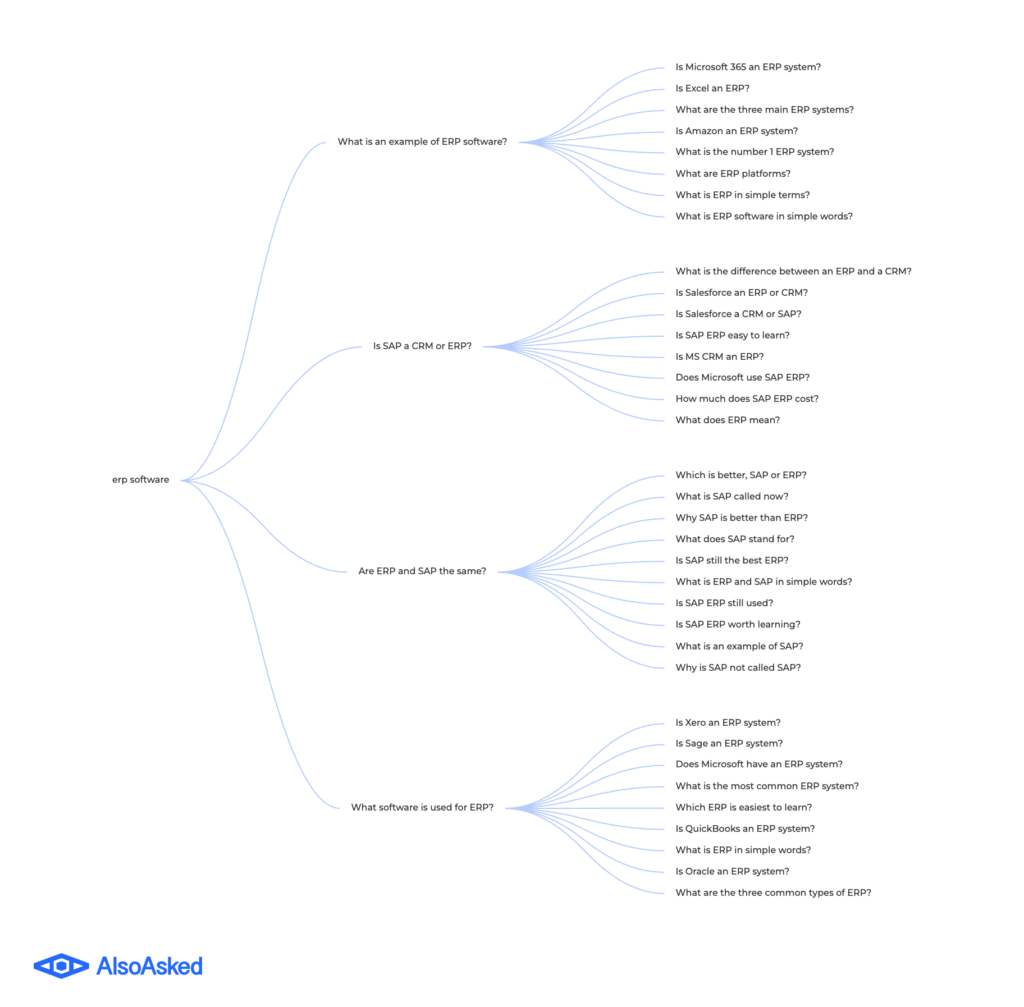In 2024, the SEO landscape is shaped by technological advancements (especially as it relates to AI) and shifting user behaviors. Digital marketers and businesses must adapt swiftly to remain competitive and effective. This comprehensive guide delves into key SEO trends and offers actionable strategies for harnessing new SERP developments and gaining visibility in Google, Bing, YouTube, and other search engines.
Jumplinks:
- Understanding Google’s AI Overview
- Optimizing for Zero-Click Searches
- Implementing Answer Engine Optimization (AEO)
- Establishing and Maintaining Topical Authority
- Strategies for Effective Video SEO
- Adapting to Evolving Search Engine Ranking Factors
- Leveraging AI-Powered SEO Tools
- Refreshing Content for Improved SEO Performance
- Adjusting to Shifting User Search Intent
- Utilizing Human Experience to Enhance Content Authenticity
- Enhancing Content Visibility Through Author Identity
Understanding Google’s AI Overview (formerly SGE)
Google’s AI Overview uses advanced AI to directly answer queries within the search results, minimizing user interaction with actual web pages. This function affects how webmasters should optimize content to maintain visibility.

Technical Aspects of AI Overview Optimization
- Featured Snippets: Your website and blog content should be structured to answer questions commonly asked within your industry accurately and directly.
- Voice Search Considerations: As AI Overview feeds into voice search, ensure your content uses natural language that matches how people speak. Focus on long-tail keywords that are likely spoken during voice searches.
- Content Structuring: Clearly define sections within your content using H1-H6 tags, making it easier for AI Overview to parse and display information directly from your website.
- Utilizing Schema Markup: Implement schema markup/structured data to define articles, FAQs, events, and other key information explicitly, helping Google understand and extract content accurately.
Example Scenarios
- Event Websites: Implement Event schema to highlight upcoming events directly in search results, ensuring that dates, locations, and times are easily accessible.
- Medical Websites: Use FAQ schema on pages discussing health topics to increase the likelihood of being featured directly in search answers.
Optimizing for Zero-Click Searches
Zero-click searches are where the user’s query is answered directly on the SERP, often through features like Knowledge Graphs, Featured Snippets, or Local Packs.

Zero-Click Optimization Techniques
- SERP Feature Targeting: Enhance content to target specific SERP features. For local businesses, ensure that Google Business Profile (formerly Google My Business) listings are optimized to appear in Local Packs.
- Structured Data: Use structured data to help search engines understand the context and specifics of your content, making it easier to be featured in zero-click searches. For example, markup provides detailed product information, such as price, availability, and reviews, directly in the SERPs for product pages.
- Blog Posts: Summarize key points at the beginning of articles or create a table of contents with anchor links to help Google extract snippets more efficiently.
- FAQs: Creating FAQ pages with clear, concise answers and marking them up with FAQ schema can increase the chances of being featured in zero-click searches, particularly for businesses in technical fields like IT or legal services.
Implementing Answer Engine Optimization (AEO)
Answer Engine Optimization focuses on optimizing content to be the direct answer to queries, a critical aspect as search engines evolve into answering machines (especially as AI functionality becomes more widespread) rather than information retrievers.
Key Steps for AEO Implementation
- Rich Answer Optimization: Beyond just providing text answers, include tables, charts, and graphs that provide rich data answers that search engines can easily parse and display.
- Direct Answer Format: Structure content to answer questions directly. Use bullet points for steps, numbered lists for rankings, and tables for comparative data.
- Semantic Richness: Enhance content with semantically related keywords to cover various aspects and nuances of the topic, which helps in ranking for answer boxes.
AEO in Action
A technology blog can enhance its SEO by structuring troubleshooting guides that answer common error queries with step-by-step instructions, potentially formatted in a numbered list to facilitate direct answers.
Practical Implementations
- Financial Websites: Create content that directly answers common financial questions, like “How to calculate mortgage interest?” Use step-by-step guides and definitions.
- Cooking Portals: Format recipes with clearly defined ingredients and instructions sections. Include preparation times, serving sizes, and nutritional information using proper schema.
Establishing and Maintaining Topical Authority
Topical authority is increasingly recognized by search engines and is crucial for ranking higher in search results.

Building Topical Authority
- Deep-Dive Content: Produce in-depth content that addresses all facets of a topic, from beginner to advanced levels.
- Comprehensive Content Clusters: Develop content clusters around central themes, ensuring that all facets of the topic are covered in depth.
- Backlinking Strategy: Acquire backlinks from other authoritative sites within the same niche, which reinforces the topical relevance and authority.
Example of Topical Authority
- Tech Blogs: Focus on specific technologies such as blockchain, providing a comprehensive suite of articles from “What is blockchain?” to “Advanced blockchain coding techniques.”
- Healthcare Sites: Cover a health condition like diabetes in exhaustive detail, including symptoms, treatments, lifestyle advice, patient stories, and latest research.
Strategies for Effective Video SEO & YouTube Optimization
With the surge in video content consumption, optimizing video for SEO is critical for capturing traffic across both search engines and video platforms like YouTube.
Video SEO Techniques
- Keyword-Rich Titles and Descriptions: Optimize video titles and descriptions with relevant keywords without sacrificing user engagement.
- Video Transcripts: Include full transcripts for videos, which not only makes them more accessible but also indexable by search engines.
- Thumbnails and Metadata: Design compelling thumbnails and use targeted keywords in your video titles, descriptions, and tags.
- Accessibility Features: Include closed captions and transcripts not just for accessibility but also for indexing purposes.
- Tutorial Videos: Create step-by-step tutorial videos for products or services. Ensure that spoken content uses relevant keywords naturally.
- Interviews and Webinars: Publish interviews with experts, using detailed descriptions and tag the video with relevant keywords related to the discussion topics.
Leveraging Video Content
For example, a culinary site should post high-quality video recipes with detailed titles and descriptions that include terms such as “how to make a chocolate cake at home” to capture both search engine and YouTube searches.
Adapting to Evolving Search Engine Ranking Factors
Search engines frequently update their algorithms, which can shift the importance of various ranking factors. Keeping abreast of these changes is crucial.
Key Ranking Factor Adjustments
- Mobile-First Indexing: Ensure your site is fully optimized for mobile users, including speed and layout.
- E-E-A-T Principles: Strengthen the expertise, authoritativeness, and trustworthiness of your content, particularly for YMYL (Your Money Your Life) topics.
- Page Experience Update: Focus on user experience metrics like loading speed, interactivity, and visual stability. Tools like GTmetrix or Google’s Pagespeed Insights can help guide speed improvements.
- Content Depth and Quality: Google’s recent updates place a greater emphasis on well-researched, deeply analytical content that provides genuine value to the reader.
Continuous Algorithm Monitoring
Regularly revising your SEO strategy based on the latest updates can maintain or improve your rankings. For instance, after an algorithm update, a financial advice website might need to bolster its content’s credibility through more explicit author bios and expert reviews.
Examples of Techniques
- E-commerce Sites: Optimize product pages by improving load times, using high-quality images, and providing exhaustive product descriptions and user guides.
- News Portals: Ensure content is updated frequently and incorporates multimedia elements like videos and interactive charts to engage users effectively.
Leveraging AI-Powered SEO Tools
AI tools can significantly enhance SEO by providing insights into data trends and automating complex analyses.

Integration of AI Tools
- Predictive Analytics: Use AI to predict trends and adapt your SEO strategy accordingly. This could involve predicting seasonal trends in consumer behavior.
- Content Optimization: Employ AI-driven tools to analyze and optimize the readability and engagement of your content based on user interaction data.
Example of AI Tool Usage for SEO
A marketing firm might use AI tools to analyze the effectiveness of different headline types across thousands of posts to determine which styles drive the most engagement and adapt their content strategy based on these insights.
Refreshing Content for Improved SEO Performance
Updating and refreshing existing content is vital for maintaining its relevancy and effectiveness in search rankings.

Content Refresh Strategy
- Update Outdated Information: Regularly review and update content to reflect the latest information, standards, and practices in your industry.
- Improve User Engagement: Enhance old posts with new multimedia elements, interactive content, or up-to-date research to boost user engagement and dwell time.
- Recurring Content Audit: Regularly audit content to identify pieces that are outdated, underperforming, or no longer relevant. Update these articles with current information, improved images, and optimized SEO.
Refreshing Content in Practice
An educational site might regularly update its articles on scientific topics to include the latest research findings or new multimedia elements like videos and interactive diagrams, which can help retain high rankings.
Adjusting to Shifting User Search Intent
User search intent can evolve due to cultural shifts, new technologies, or changes in consumer behavior. Adapting to these shifts is crucial for maintaining SEO efficacy.

Steps to Adapt to Changing Search Intent
- Ongoing Keyword Research: Continuously perform keyword research to catch emerging trends and shifts in how users phrase their searches. People Also Ask (PAA) is a Google SERP feature that can provide an excellent overview of intent for a keyword. Just search the keyword in Google and then assess the PAA results.
- Real-Time Analytics: Use analytics tools to monitor how user interactions with your site change over time. Look for patterns that may indicate shifts in user needs or interests.
- Agile Content Development: Be prepared to quickly develop content that addresses emerging trends or shifts in user interest.
Examples of Shifting User Search Content Adaptations
A news outlet may shift its content strategy to focus more on streaming video content and real-time updates during major global events, as user demand for immediate information increases. Or a financial services company could pivot content to focus more on savings, budgeting, and financial security during an economic downturn. Or a travel website could quickly update travel guides and advisories to reflect the most current information.
Utilizing Human Experience to Enhance Content Authenticity
Human experience adds a layer of authenticity and trustworthiness to content that algorithms and fabricated articles cannot match.
Incorporating Human Experience
- Narrative Storytelling: Use real-life stories and experiences to create more engaging and relatable content.
- Customer Stories: Share real customer testimonials and case studies that highlight the effectiveness of your products or services.
- Behind-the-Scenes Content: Provide insights into your company’s processes, people, and culture to create a more relatable and transparent brand image.
Examples of Incorporating Human Experience in Content:
- Health and Wellness: Include patient stories and doctor insights to humanize complex medical information and make it more relatable.
- Travel blog: A travel blog could enhance its posts by including first-hand accounts of destinations from recent travelers, offering unique insights and tips that are far more engaging than generic travel content.
- Corporate Blogs: Share employee stories and achievements to showcase the human side of your business and build a connection with your audience.
Enhancing Content Visibility Through Author Identity
Author identity plays a significant role in how content is perceived by both users and search engines, especially in terms of expertise and credibility.

Promoting Author Identity
- Author Pages: Develop comprehensive author pages that detail their expertise, background, and other contributions.
- Expert Contributions: Encourage industry experts to contribute to your content. Highlight their credentials and experience prominently.
- Consistent Author Profiles: Maintain detailed and consistent author profiles across your content. Include links to professional achievements, other publications, and professional social media profiles.
Practical Application
- Medical Website: Feature detailed profiles of contributing doctors, highlighting their credentials and areas of specialty, which enhances trust and authority in the content provided.
- Legal Advice Websites: Feature articles written by lawyers with noted expertise in specific fields of law, accompanied by their professional profiles and past case studies.
- Academic Publications: Ensure that papers or articles include detailed author bios, highlighting their research background and contributions to the field.
Ready to Improve Your SEO?
The SEO landscape is ever-changing, and staying updated with the latest trends is crucial for maintaining a competitive edge. If you’re ready to boost your online presence and ensure your SEO strategy is ahead of the curve, we’re here to help.
Contact Us Today!
Our team of experts at Ice Nine Online is dedicated to helping you navigate the complexities of SEO and achieve your digital marketing goals. Whether you need a comprehensive SEO audit, tailored strategies, or ongoing support, we’ve got you covered.
Why Choose Us?
- Proven track record of success with diverse clients
- Cutting-edge SEO techniques and tools
- Customized strategies tailored to your business needs
- Transparent reporting and measurable results
Don’t let your competitors outshine you in 2024. Let’s work together to elevate your SEO game and drive more traffic to your website. Reach out now and start your journey to SEO success!
Share this Post


Comments
Great blog post! Thanks for sharing this article.
Thanks for sharing this article. I think this will be so useful to new bloggers and I have to agree that internal linking is such a great and easy way to boost your website.
Exciting insights into SEO trends for 2024! Stay ahead with these strategies.
SEO in 2024 is being reshaped by several key trends. AI-driven tools are enhancing search precision, while zero-click searches are becoming more common, requiring innovative strategies to capture audience attention. Answer Engine Optimization (AEO) is rising, focusing on direct answers. Building topical authority and emphasizing authenticity and authorship are crucial for ranking high and gaining trust. Staying ahead means adapting to these evolving dynamics.
Great blog post! I appreciate the valuable information on SEO Trends. The knowledge you shared is really helpful.
Thanks for providing such clear and actionable advice!